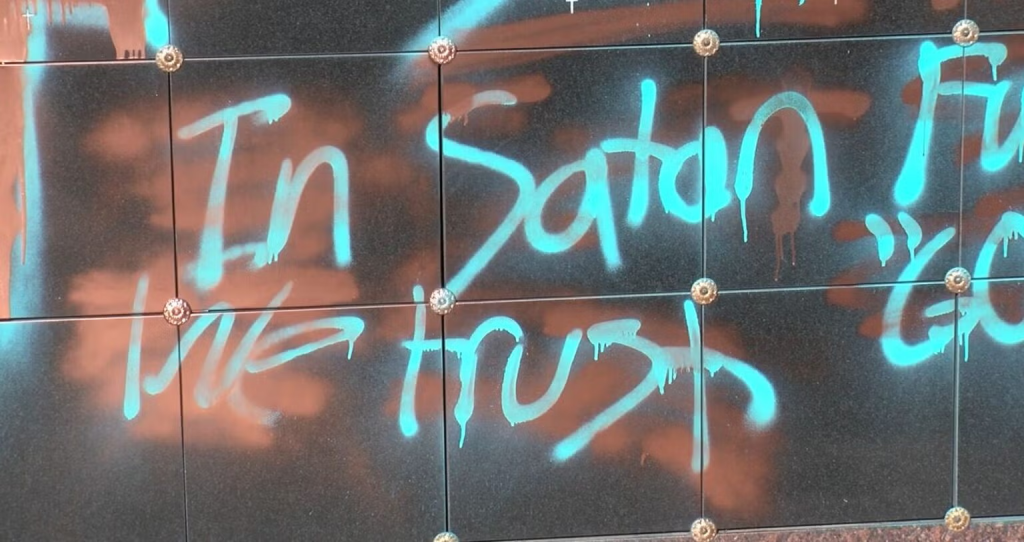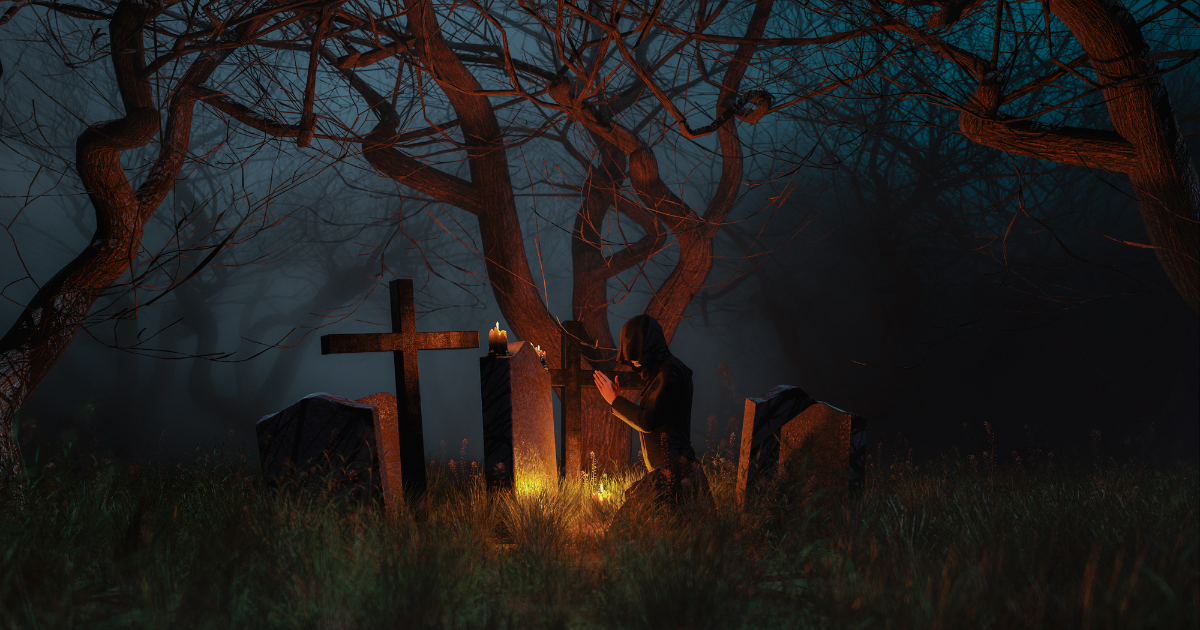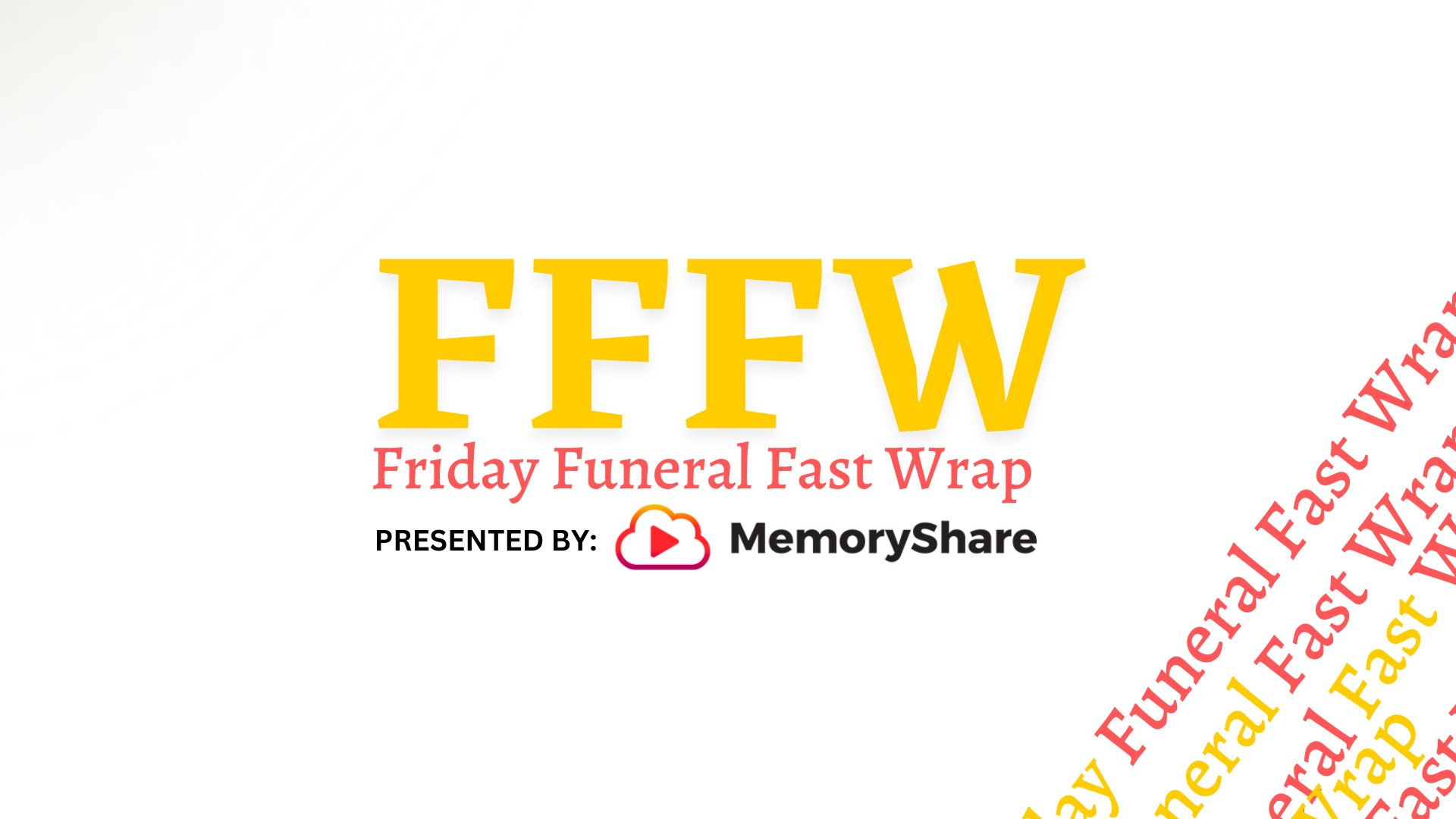Get Ready, Cemeteries: ‘Tis the Season for Necrotourists
One might assume that most cemeterians eventually develop a love/hate relationship with visitors. For example, family and friends are always welcome to stop by a loved one’s resting place — as long as they’re not driving through the grass or breaking the decoration rules. Likewise, you probably don’t mind when folks from the community walk the grounds for exercise, drive through to appreciate the beauty of nature, or learn more about the people of the past. You might even be OK with the #Gravetok creators who film themselves cleaning an old gravestone or eating a pie they made from a recipe engraved on a marker.
But how do you feel about people whose only purpose for visiting a cemetery is to revel in a place of death and sorrow, create creepy horror reels, or to pose for selfies at the graves of babies? While this type of questionable motivation or behavior can happen anytime of the year, the weeks leading up to Halloween are prime time for some of the sketchiest situations a cemeterian might encounter.
It’s called necrotourism
“Necrotourism” is a recently-coined term used to describe a niche form of tourism focused on visiting sites related to death. The concept itself isn’t new though, as people have naturally been drawn to sites of tragedy and death throughout history. These sites are most commonly cemeteries, but also include memorials, museums, and other places of historical or cultural significance where the deceased are remembered.
All in all, necrotourism isn’t a bad thing, as many tourists are visiting these spots to appreciate the art, architecture, and history found in these locations or to simply honor those who died there. Visits to Ground Zero, Auschwitz, and Chernobyl, for example, can be incredibly educational, spiritual, and life-changing experiences.
Many modern cemeteries were created to be places for people to gather — for recreation and relaxation as well as mourning and remembrance. Today, Green-Wood Cemetery in Brooklyn and Hollywood Forever in Los Angeles are just as well-known for their overflowing calendar of events as they are for their famous residents.
The dark side
Naturally, as the number of visitors to a cemetery or memorial site grows (along with the sales of t-shirts and guided tours), so do debates on the morality and ethics of profiting from tragedy. Some worry that encouraging necrotourism can lead to exploitation of suffering, disrespect to the dead and their families, and the possibility that people will forget the true purpose of the site.
These consequences are known as the “dark side” of necrotourism — when sites meant for respectful memorialization attract visitors with more nefarious intentions. Sadly, and perhaps, expectedly, these visitors and the creepy and/or criminal behavior spike in October, especially around Halloween — and especially at cemeteries.
Hateful and obscene
Over the last several decades, more reports of stolen or disturbed grave decorations, toppled vases, graffiti, trespassing, and other petty to serious vandalism have been reported in October than in other times of the year. In 2022, for example, criminals chose Halloween night to paint “hateful and obscene graffiti” (including some Satanic language) on graves and columbariums in a Catholic cemetery in New York. The cleanup and restoration cost thousands of dollars, in addition to the human cost in grief and outrage.

Other activities can be even more depraved and dishonorable. In 2007, someone dug up the grave and stole the remains of a woman who died 1821 from a New Hampshire cemetery around Halloween. The hole they dug was “a perfectly rectangular hole, 5 1/2 feet deep, with evenly piled mounds of dirt left on either side of the empty grave,” leading authorities to suspect that the actions were motivated by witchcraft or satanic ritual, as “some believe that if a skull is stolen on Halloween night, it will grant powers to a person who holds it.”
A similar situation occurred in Queens, New York on October 31, 2016, when vandals broke into a mausoleum, “wrecked the place,” leaving bones and clothing scattered about, and left with the skull of a man and the entire skeleton of a woman, both of whom died in 1928.
While these examples are somewhat extreme, today’s social media culture has certainly compounded the potential for Halloween mischief — and the recording of such activities. Even though trespassing on cemetery grounds is a classic adolescent Halloween activity (call it old-school necrotourism), the resulting videos or images of the actions for TikTok, YouTube, or Instagram can lead to much bigger issues.
Practical preparations
There are some things cemeterians can do to proactively prevent or prepare for Halloween hijinks:
- Remind families (especially in October) about removing fragile decorations overnight, and offer to store or safeguard seasonal items.
- Collaborate on lighting, camera coverage, visitor policies for high-risk nights, and volunteer watch rotations.
- Encourage family members to photograph damage and file police reports immediately; quick reporting increases chances of prosecution and insurance recovery.
- Help families with repair referrals, memorial restoration fundraising, or compassionate communications.
- Counsel communities about the social-media angle (don’t film or post desecration) and coordinate with police/parks departments about rapid takedown of offending posts if possible.
Good luck, and Happy October!




